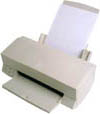The Semicolon
Recognize a semicolon when you find one.
The semicolon ( ; ) is a powerful mark of punctuation with three uses.
The first appropriate use of the semicolon is to connect two related main clauses (complete sentences).
Follow this pattern:
Main Clause + ; + Main Clause.
Here is an example:
Grandma still rides her Harley motorcycle; her toy poodle balances in a basket between the handlebars.
A semicolon can also team up with a transition—often a conjunctive adverb—to connect two sentences close in meaning.
Here is the pattern:
Main Clause + ; + Transition + , + Main Clause.
Check out this example:
My father does not approve of his mother cruising around town on a Harley motorcycle; however, Grandma has never cared what anyone thinks.
Finally, use the semicolon to avoid confusion when you have complicated lists of items.
Here is the pattern:
Item + , + More Information + ; + Item + , + More Information + ; + and + Item + , + More Information
Read the following example:
On a Harley motorcycle, my grandmother and her poodle have traveled to Anchorage, Alaska; San Francisco, California; and Tijuana, Mexico.
Keep these three things in mind when you use a semicolon:
- The two main clauses that the semicolon joins should be closely related in meaning.
- Do not capitalize the word that follows the semicolon unless that word is a proper noun, one that is always capitalized.
- Limit your use of semicolons; you should not scatter them haphazardly throughout your writing. Semicolons are like glasses of champagne; save them for special occasions.
©1997 - 2025 by Robin
L. Simmons
All Rights Reserved.
